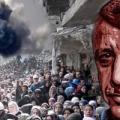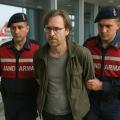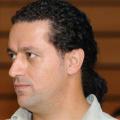Barzan Hama Sour
The language of beautiful images and reality
According to the language of the pictures, the Kurds have reached the top of politics.
But when it comes to the harvest, the Kurds return with empty hands and pockets!
Are Kurdish leaders doing this policy, paying a lot of money to get to these places and take these pictures to tell their party supporters that they are working at a high level?
It is important to approach such statements with critical thought and consider multiple perspectives. The interpretation of political situations, especially through visual representation, can vary greatly.
The idea that a Kurdish group or party may use imagery to depict a particular political narrative is not unique to them. Politicians and leaders around the world often participate in image-making activities to shape public opinion.
This may include showcasing achievements, meetings with influential figures, or other activities that convey a sense of political success and influence..!
However, it is crucial to distinguish the symbolism presented in the images from the complex realities of governance, policy implementation and economic development. Political attitudes and effective governance are not always synonymous, and the successes depicted in photographs do not necessarily reflect the overall well-being of a society.
If there are claims that Kurdish leaders spend significant resources on image building while neglecting to meet the real needs of their constituents, it is important to verify these claims through credible sources. Investigative journalism, independent assessments and diverse perspectives can provide a more realistic understanding of the situation.
In any political context, it is important to consider the diversity of views within the community. For example, every Kurd may have the same opinion about their leaders or the impact of their policies. Engaging in open discussions and seeking input from multiple sources can contribute to a more holistic understanding of the situation.
In addition to considering the diversity of views, it is also essential to examine the broader socio-political and economic context in which these claims are made. The effectiveness of governance and policies can be influenced by a myriad of factors, including historical circumstances, regional dynamics, geopolitical considerations, and economic conditions.
Moreover, the distribution of resources and benefits within a community is a complex process. Allegations of mismanagement or corruption should be thoroughly investigated by the relevant authorities and the legal system should hold leaders accountable if such claims are substantiated.
It is worth noting that political narratives can be shaped not only by leaders but also by different stakeholders, both internal and external. Media outlets, opposition groups, and international actors may have their own perspectives and agendas that influence the portrayal of political events and leadership.
To form a good understanding, it is advisable to consult a variety of sources, including local and international news, scientific analysis, and reports from reputable organizations. Additionally, engaging with individuals in the community and hearing their lived experiences can provide valuable insight into realities on the ground.
Finally, assessing claims about the political situation, leadership policies, and their impact requires a thoughtful and comprehensive approach. By considering multiple perspectives and sources, one can better navigate the complexities of political dynamics and gain a more informed view of the actual conditions faced by the society in question.





